Dangers in the forest – on these 15 things you should pay attention.
In the wilderness, many dangers lurk: animals, rotten trees, weather changes or illnesses. Learn how to avoid these dangers easily in the forest.
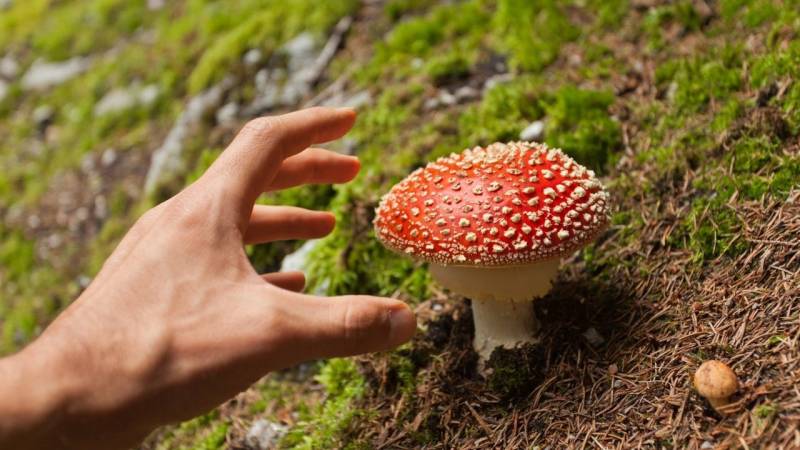

From Martin Gebhardt. Check out my “About me” page.
👉 The key facts from this guide
- Tools: Safe handling of knives, axes, and saws is important to avoid injury.
- Animals: Wild animals can be dangerous, especially when they have offspring. Ticks and parasites also pose a threat.
- Deadwood: When setting up a camp, pay attention to rotting branches ("widow-makers") that could fall and cause injury.
- Weather: Extreme weather conditions such as rain, sun, thunderstorms, water, ice, hail, and snow can be dangerous and require appropriate preparations.
- Fire: A fire can be both a source of warmth and a source of danger. It should always be handled safely and responsibly.
- Plants: There are poisonous plants that look very similar to edible plants and can therefore be easily confused.
It's clear that there are dangers lurking in the wilderness. Animals, rotting trees, sudden changes in weather or illnesses.
And wouldn't it be fantastic if you knew exactly how to deal with them?
That's what we're going to discuss today: the dangers in the woods and how to avoid them.
Let's get started.
This guide also has a matching podcast. Listen to it here.
First Forest Rule: Never Take Risks
I used to take many risks.
Until one day my recklessness caught up with me.
I was careless with my axe and hacked into my leg.
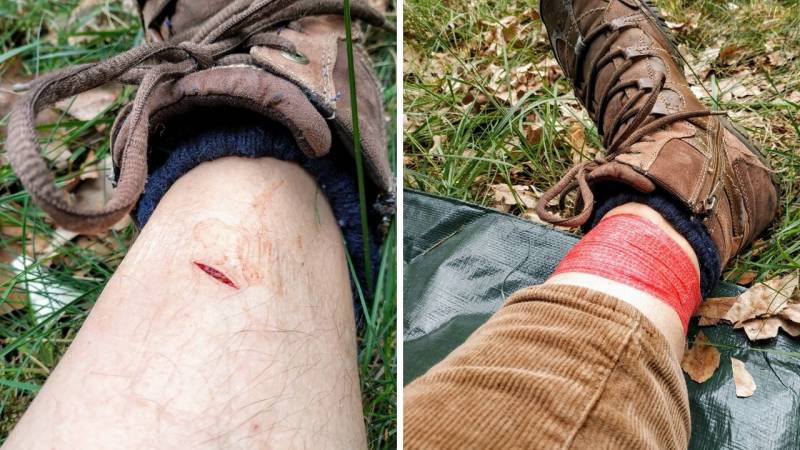
At that moment, I was terrified. My eldest son was with me, and I would rather not panic him.
It wasn't bleeding heavily, but I could see a 2 cm gash in my leg. Luckily, the bone wasn't affected.
I sought advice from a medic, who suggested that the wound should be stitched up. However, there were no doctors available in the area.
I had pain for three days, but the wound closed and healed without infection. Today I have a scar that reminds me of the foolish accident.
So let's get straight to the first danger: tools.
1. Tools
If you use a knife, an axe, or a saw, always think about safe handling.
No matter what else you consider important: safe handling of tools is essential and comes first.
This also includes sharp knives and axes because you are much more likely to injure yourself with dull blades. One of the biggest myths out there is that dull knives are safer than sharp knives.

And when you're done working, the first thing you do is put your knife back in its sheath. The same goes for saws and axes.
Accidents don't happen by chance. Ignorance about the necessary safety measures often plays a major role.
In my Wild Impulse program, I go into detail about the safety and handling of knives, saws, and axes.
2. Animals
As beautiful as the animal world may be, it also harbors many dangers.
There aren't many animals in Germany that can become a threat to us. Nevertheless, it's important to know how to handle a wild boar or a wolf.
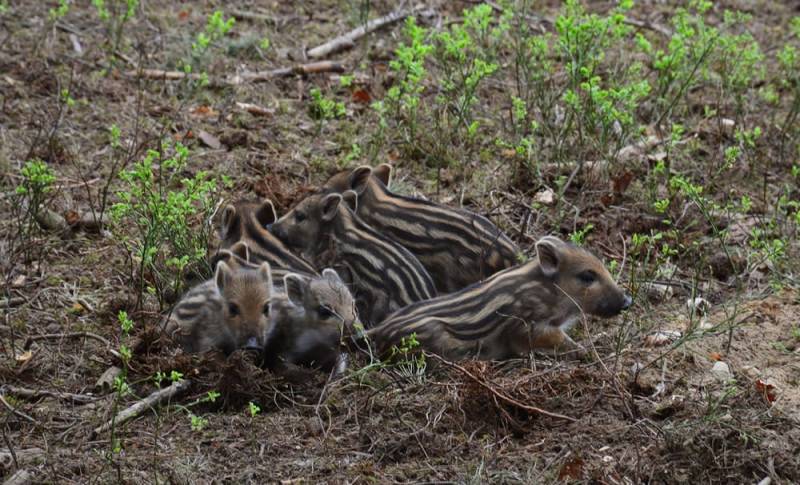
But it's not just the big animals that can be dangerous to you, you should also keep an eye out for these mini beasts called ticks.
In addition, contaminated bodies of water due to carcasses or parasites can also be a threat.
In general, you should not touch dead animals, as bacteria or viruses can be transmitted. In 2017, tularemia spread in Bayreuth and in 2020 in Deggendorf, both in Bavaria. The bird flu virus (H5N8) can also be transmitted by handling dead birds.
The droppings (feces of wild animals) and the regurgitated undigested food remains (pellets) also pose a threat.
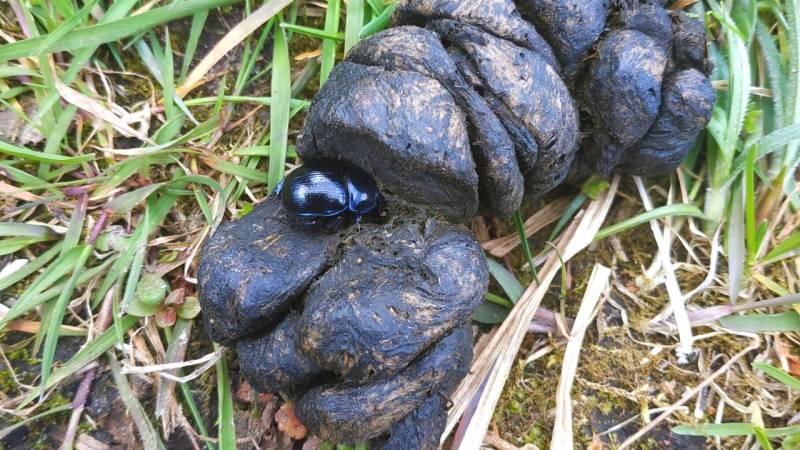
Pellets can contain viruses. For hygienic reasons, it is advisable to wear rubber gloves.
Before examining or processing the pellets, a 14-day quarantine at room temperature is recommended, or - if you are in a hurry - use the oven.
3. Deadwood
There are some things to consider when setting up your camp.
An important point is "widow makers". These are thick, rotten branches that can come crashing down on your camp at night and bury you.
So, always look up when you set up your hammock or tent. What do you see up there? Do the branches look stable?
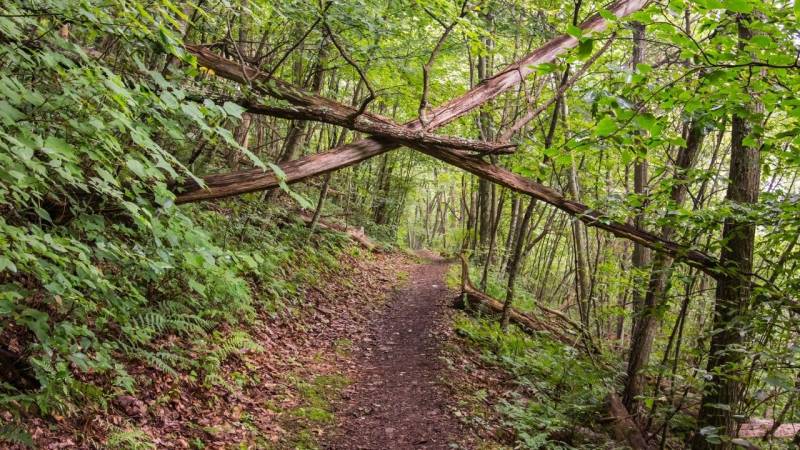
Es often happens that lightweight wood species cause cracking, for example big poplars, willows, or lindens.
However, you should also keep a close eye on oaks and beeches.
Read also: How to find the ideal location for your bushcraft camp
4. Weather
Nature has some surprises in store for us. Especially with the weather, it can get quite tricky.
Rain
Heavy rain can surprise you severely. If you are not prepared, you will get wet.
In summer, that's no problem, but in the cold seasons you can quickly start feeling cold. Furthermore, be aware that the temperature drops when rain sets in.
So, set up your tarp or tent early enough and make sure your rain gear or ponchos are easily accessible in your backpack.
Sun
Intense and permanent sunshine can give you a sunstroke. So, constantly search for shady places and take enough breaks in midsummer.
A cloth or hat are good ways to protect your head.
Thunderstorm
A thunderstorm usually comes along with lightning. And lightning is life-threatening. Especially when you are in an open field and the highest point.
Therefore, the best thing to do during a thunderstorm is to flee to a forest or stand 3 to 4 meters next to a tall power pole.
I have summarized all the precautions in the guide, "Is it dangerous to camp during thunderstorms? How to behave safely?". It's best to read it.
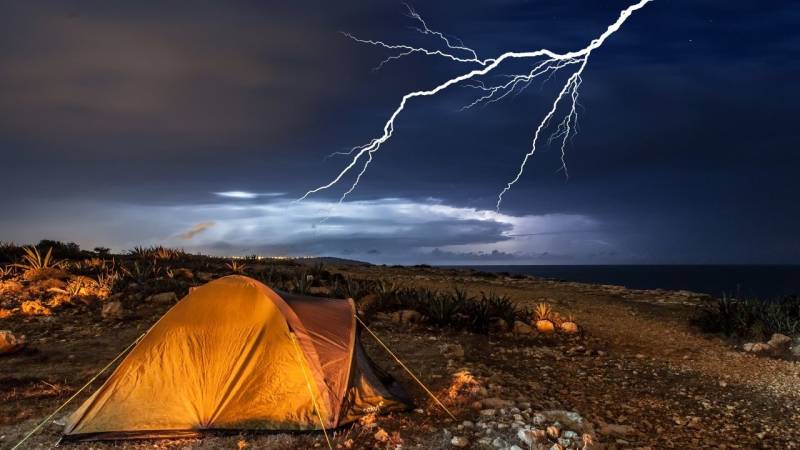
Water
Heavy rain showers typically bring a lot of water with them. Small streams can turn into raging rivers. Flash floods are not uncommon in the mountains. So be careful where you set up your camp.
Ice
Black ice can break your legs. Wear the right shoes and walk carefully on black ice.
Hail
The ice balls, sometimes as big as tennis balls, have an enormous impact and even cause fatalities. The largest recorded hailstone fell in Kansas in 1970, weighed 766 grams and had a circumference of 19 centimeters.
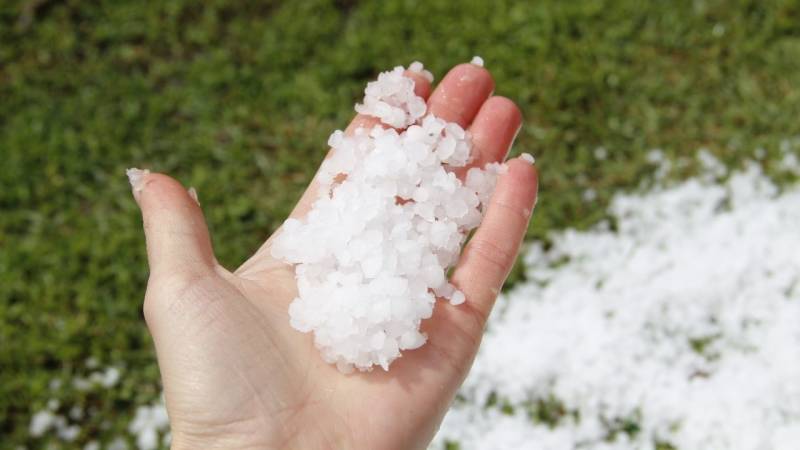
Snow
If you're out and about in winter, you should wear warm clothing. Otherwise, the cold will take a toll on you permanently.
And if you're sleeping outside in the cold season, you need to do everything you can to stay warm in your tent.
In addition, heavy snowfall can limit visibility and prevent you from moving forward. If you're unlucky, you could get snowed in. So find shelter from heavy snowfall early on.
P. S. Please check the weather forecast before every trip. Even if it's often wrong, it gives you good clues.
Reading tip: 8 tips for better winter hiking
Darkness
Everything is twice as difficult in the dark. It's even worse if you don't have a light source, like a flashlight, with you. In winter, make sure you're aware that it gets dark in Germany around 3 p.m. A headlamp is small and fits in any backpack.
5. Fire
Sitting by the campfire is great. Maybe sing a song and enjoy the evening together.
But a fire is always a potential danger.
First for you because you can get burned, especially if hot liquids like water are involved.
But you can also cause massive damage to your environment if, for example, you start a forest fire.
Did you know that most people don't die from burns in a fire, but from smoke inhalation?
So, when making a fire, pay attention to the following:
- Don't inhale smoke.
- Only light a fire in well-ventilated areas. Avoid making fires in caves.
- Check above you for flammable materials.
- Build a safe fire pit.
- Have enough water or sand/earth to put out the fire.
- Never leave a fire unattended.
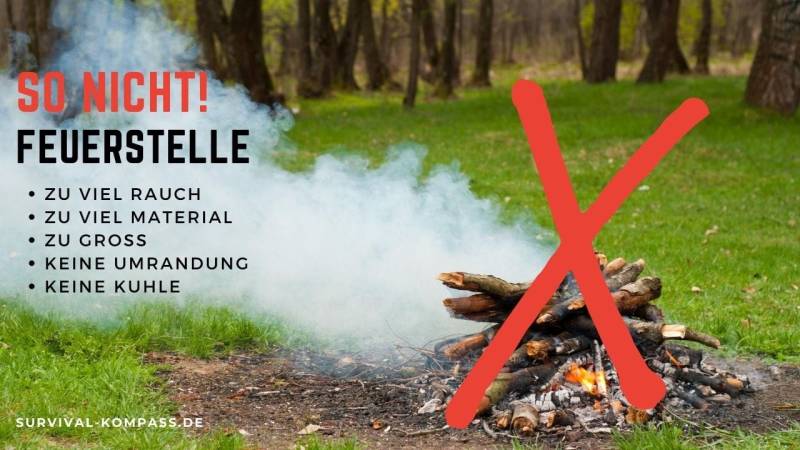
With my guides, you'll become a fire pro. Read the following:
- The bushcraft fire pit: how to build it perfectly
- How to ignite a fire with just one match
- How do I light a fire? [10 steps to success]
6. Plants
Collecting herbs is fun, and the plants from the forest are ecologically grown and full of vitamins.
But there are poisonous look-alikes that are so strong that you can die within an hour.
And believe me, that's not a nice death from respiratory failure.
There are also poisonous plants in Germany, and some are very similar to other edible plants.
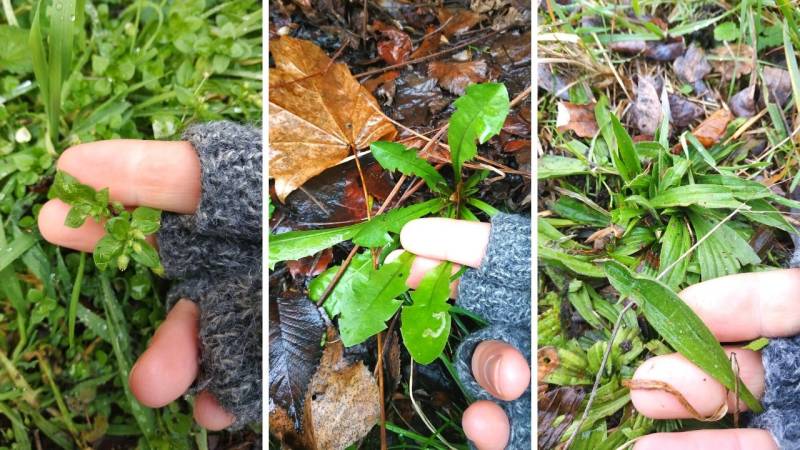
Only experts who have been dealing with this for a long time can tell these doubles apart.
I recommend that anyone who wants to deal with edible plants should study poisonous plants first.
That's why I created a Pocket Field Guide, which you can find here. Learn about 11 life-threatening poisonous plants in the guide that are almost identical to edible wild plants and can therefore be easily confused.
And if you're looking for edible plants in your forest, I recommend my ultimate guide "Edible plants: this emergency food can be found in the forest (list + pictures)".
7. Feathers
What? Feathers are supposed to be dangerous?
Exactly. The risk is low, but there is a danger of getting infected with bird flu.
And the risk of infection is higher, especially for children.
Children should not play with found feathers or contaminated sand from birds.
This only applies to risk areas, and feathers do not generally pose a danger.
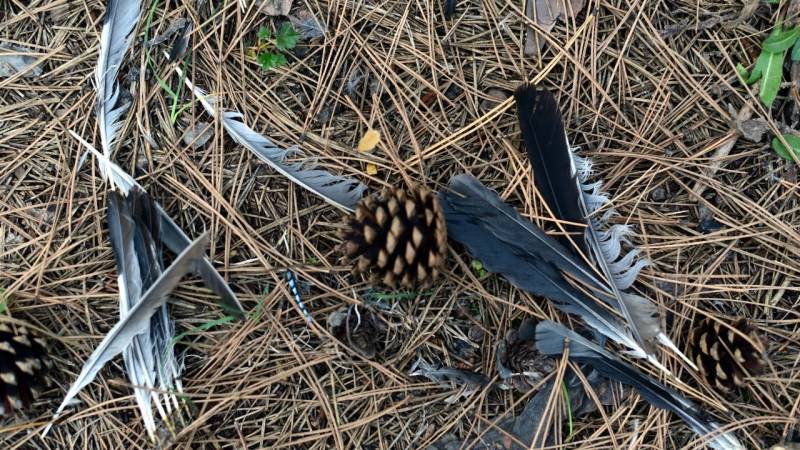
The bird flu virus on the hand itself is not dangerous, but once the pathogens enter the body, it becomes dangerous.
Washing hands with warm water and soap is the easiest way to protect yourself.
Caution: The viruses are also transmitted by inhalation.
Read more here about the most frequently asked questions about bird flu.
8. Terrain
On my trips, I sometimes have children or adults with me who have hardly ever been deep in the forest.
Often I have to wait for them because they can't cope with the terrain. Sticks, stones, thickets, or soft forest floors are difficult for them.
And those are the smaller obstacles.
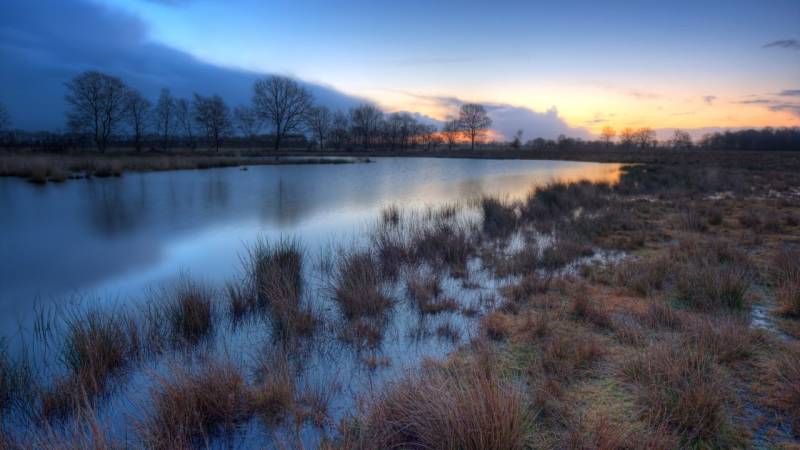
Making progress on rubble or swamp is even more difficult and even life-threatening.
So be sure to pay attention to the terrain and where you move your feet.
9. Overconfidence
In school, there was always that one boy full of overconfidence, right?
At least, I can still remember those types who thought being afraid was girlish. That's why they were the daredevils among us.
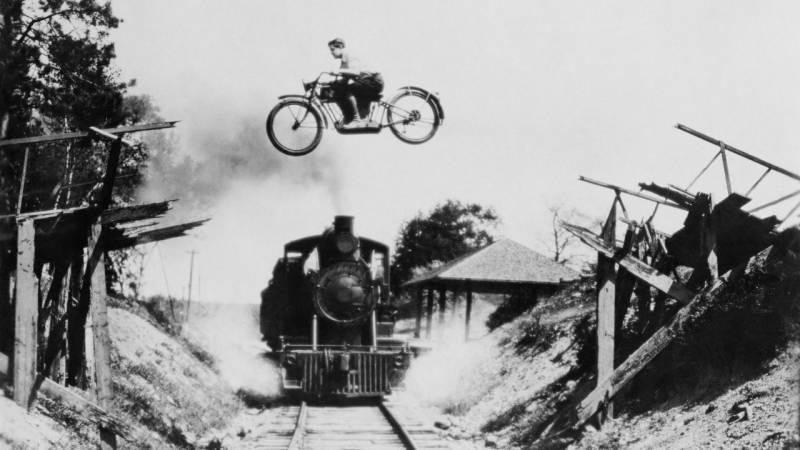
But such overconfident people regularly make mistakes in their recklessness and injure themselves.
These show-offs who could immediately ride a bike without hands were also the ones who rode a bike without teeth.
So, quickly get rid of being overconfident, daredevil, and show-off. You won't make any friends with that, and you'll also put yourself and your group in danger.
10. Fear and Panic
Fear and panic are NEVER good companions in the wilderness.
The results are often accidents, such as sprained bones. Or accidents caused by injuries with tools such as knives.

If you feel panic rising or a situation makes you afraid, slow down.
Stress is usually the trigger for fear and panic. Therefore, pay attention to your stress level during your tour. Don't let others stress you out, who may be able to do things faster.
11. Allergies
Do you know your body well? Do you know how it reacts to foreign substances?
I remember a camp years ago, where a man had sprayed himself completely with mosquito repellent. However, when he sat by the campfire, his pant legs slid up. The ankles on his feet were now free for a mosquito invasion. Within a few minutes, he had countless bites.
Generally, this is not a problem for your body if you know it and there are not too many bites. But the man had never been in the woods before and had no experience. His ankles swelled up after half an hour. His body reacted to the many mosquito bites.

In the end, he could barely walk, and only an allergy pill helped improve his condition. Therefore, make sure to always pack a suitable antihistamine in your first aid kit.
12. Water
Water can be dangerous if you drink it untreated from nature.
Often, nothing will happen, but you should never take a risk.
Untreated water can contain viruses and bacteria, so you should ALWAYS boil your water.
The ideal is to use a water filter before boiling to remove any dirt particles.
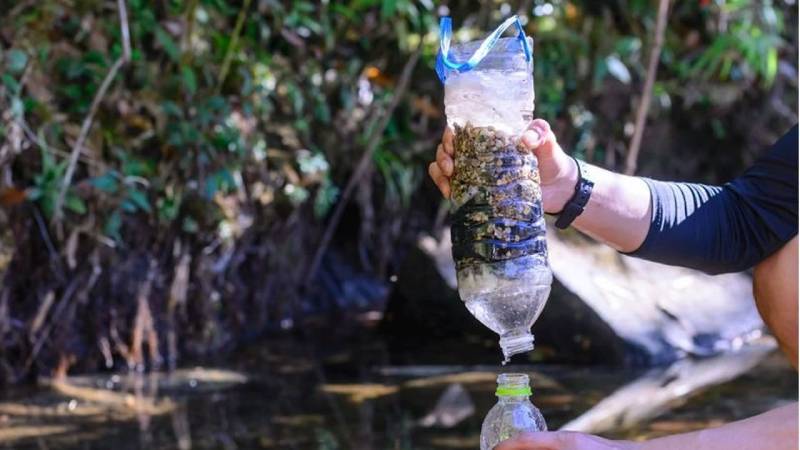
However, a water filter can NEVER reliably filter out viruses or bacteria.
You should hopefully already know that you should never drink water near a city or an industrial plant. You also shouldn't purify chemically contaminated water by boiling.
Read my ultimate guide on water "Finding, collecting, filtering and making drinking water".
13. Orientation
Imagine you're following an animal track, and you're fully in the rush of following that track. And suddenly, you find yourself in the middle of nowhere.
I've had this happen to me a few years ago. I was mushroom picking with my family and I cut a path through the undergrowth.
Mushrooms were found there, but I lost my orientation.
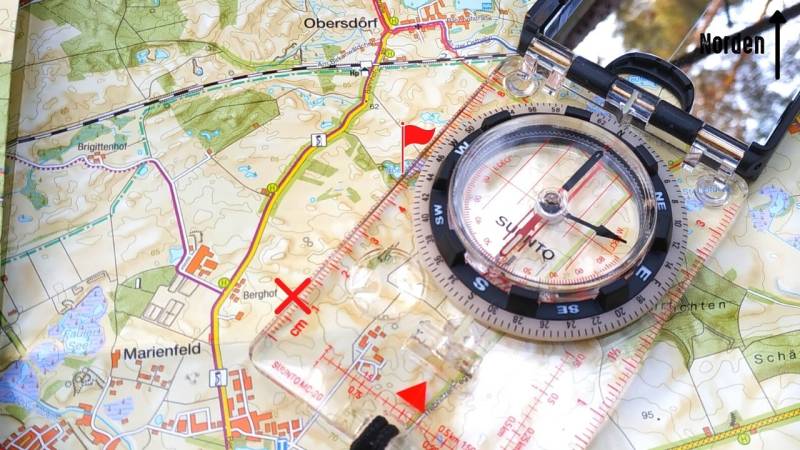
Nowhere could I spot the path from which I came. I felt panic spreading within me. I also didn't have any phone reception.
Luckily, after several attempts, I finally found my way back to the forest path.
But I can tell you that I was scared in that situation.
Therefore, my recommendation: Take a map and a compass with you. And always check the reception and battery level of your smartphone.
Reading tip: How to use a compass with a map? - The complete beginner's guide with video
14. Hunter
Since hunters hunt at dawn in the morning and in the evening, you should be particularly careful when sleeping in the forest.
Not is always a person immediately distinguishable from a wild animal in the undergrowth in the dark.
But not only that, even a stray shot or ricochet can be life-threatening.
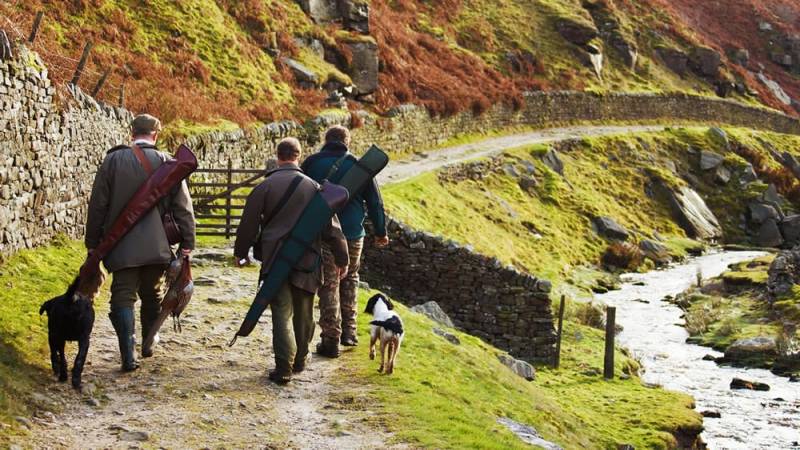
My tip: leave a note on the known tree stands and shelters of the hunters that you are in the forest or even sleeping there.
Although you risk a warning because you are not allowed to just sleep in the forest without permission, it's better than a ricochet in the arm.
Reading tip: Is sleeping in the forest allowed? [Penalties and alternatives]
15. Mushrooms
Right at the beginning, my tip: Stay away if you're not an expert.
Even experienced mushroom pickers, who have been collecting and eating mushrooms for 30 years, have poisoned themselves.
And if you do pick mushrooms and are unsure, don't feed the entire family with them. Someone will have to drive you to the hospital.
Extreme caution is required with mushrooms, as well as with wild herbs that have dangerous look-alikes.
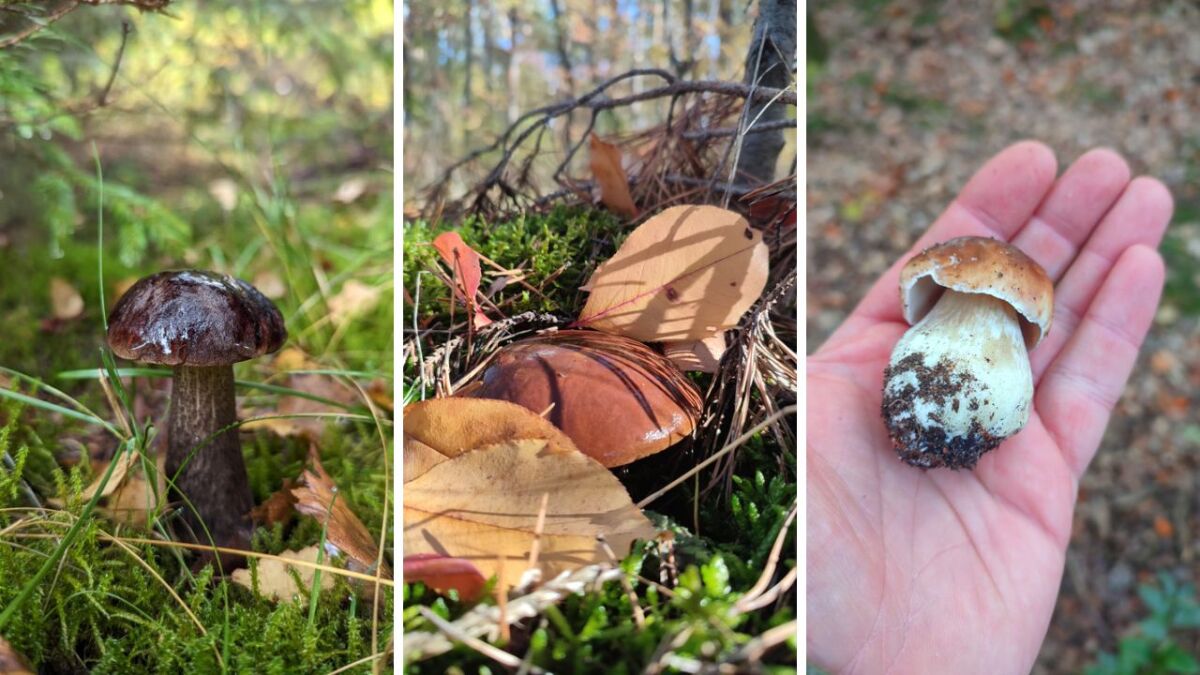
And now think about it. Did you know all the dangers, or have you even exposed yourself to some of them?
Were there situations in the past that you now see as very dangerous and would never do again?
Write it in the comments and let us share in your experience.
In this sense: I wish you an always safe stay in the forest. Stay healthy and enjoy the time.


Author of the guide
Martin Gebhardt
Hey, I'm Martin. On my blog, you will learn the basics and numerous details about living in the wild. I think survival, bushcraft and the good life in nature are the keys to happiness. Find me here on Instagram or on YouTube. You can find more about my mission on the About Me page.
Was this guide helpful?
32 people found this guide helpful.
5.00 out of 5 points (32 Ratings)
Comments (0)
This post may contain affiliate links. So if you click on the links and make a purchase, I will receive a small commission at no additional cost to you. Click here, to learn more about it.



